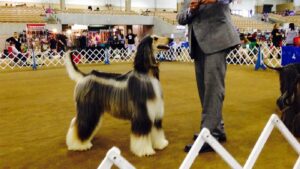
Judging the Afghan Hound
Harry Bennett, Afghan Hound Club of America Judges Education Coordinator, shares his insights on judging the Afghan Hound dog breed.
Home » Dog Breeds » Afghan Hound Dog Breed
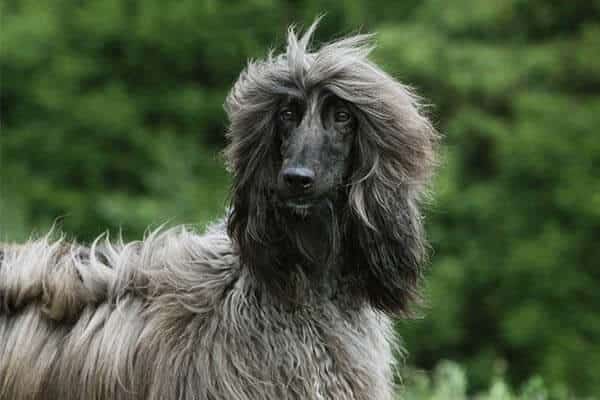
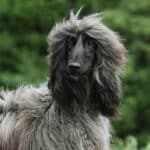
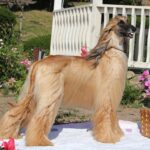
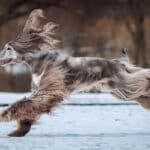
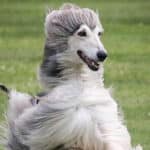
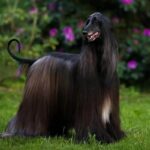
The Afghan Hound, with its flowing, silky coat and regal demeanor, stands as a testament to the diversity of the domesticated dog. Hailing from the cold mountains of Afghanistan and bred primarily for its hunting prowess due to its keen sight, swiftness, and agility, the “Afghan” has carved its niche in the hearts of dog enthusiasts around the world. Whether gracing the show ring with its springy gait, sprinting across an open field, or being an elegant and cherished companion in the home, the breed embodies a blend of aristocracy, allure, and affection.
Hound
25 – 27 Inches
50 – 60 Pounds
12 – 18 Years
| Country of Origin | Afghanistan |
|---|---|
| Bred For | Hunting by Sight |
| Known For | Aristocratic Appearance, “Eastern” Expression, Elastic Gait, Independence |
| Popularity | Moderate |
| Temperament | Active, Affectionate, Alert, Playful |
| Activities | Hunting, Running, Hiking, Conformation Shows, Dog Sports |
The Afghan Hound, with its regal appearance and luxurious coat, has a history as alluring as its visage. Tracing its roots back thousands of years, this breed is one of the most ancient dog breeds in all the world.
Originating from the mountainous regions of Afghanistan, these dogs were primarily used for hunting due to their keen sight and swift speed. They were adept at chasing game across the rugged terrain of the Afghani mountains, often targeting leopards and deer. The dogs’ thick and silky coat not only added to their majestic appearance, it also provided necessary protection against the harsh, cold climate of their native land.
Throughout the centuries, the Afghan Hound remained relatively isolated in its remote homeland, ensuring the breed’s purity. This isolation meant that for much of its history, the Afghan was largely unknown to the outside world.
It wasn’t until the 19th century that the breed made its way to Great Britain, introduced by British soldiers returning from the Indian-Afghan border wars. Captivated by the breed’s beauty and elegance, British dog enthusiasts began breeding Afghan Hounds, laying the foundation for the various Breed Standards that are recognized today.
The Afghan Hound’s appeal soon crossed the Atlantic, with the breed being introduced to the United States in the early 20th century. The Afghan’s graceful demeanor and striking appearance soon captivated American dog lovers, leading to the American Kennel Club (AKC) officially recognizing it in 1926. That same year, The Royal Kennel Club in the United Kingdom acknowledged the breed’s exceptional attributes, granting it official recognition as well. On the international stage, the Fédération Cynologique Internationale (FCI) took notice and gave its recognition to the Afghan Hound in 1961.
Today, the Afghan Hound remains a symbol of elegance, grace, and ancient canine history. Whether showcased at dog shows, sprinting in lure coursing events, or simply being a beloved family companion, this aloof and dignified breed continues to captivate and enchant, a testament to its storied past.
Adult male Afghan Hounds typically stand between 27 and 29 inches tall at the shoulder, while females generally range from 25 to 27 inches in height.
The Afghan’s weight usually ranges from 50 to 60 pounds.
The Afghan Hound presents a picture of strength and dignity, combining speed and power with an aristocratic air and an aloof indifference. The breed has a unique appearance, boasting an angular frame and an elegant carriage. The ratio of height to length presents a dog that is neither too long nor too short, with a somewhat square silhouette in profile.
Texture: The Afghan Hound’s coat is unique among sighthounds. It boasts a long, fine, and silky coat as well as a distinctive “patterning” of shorter, coarse hair on specific areas of the body. A shaggy topknot on the head is a distinctive breed feature, as are the beard and the “saddle” of short hair along the dog’s back. Short hair may also appear on the fronts of the pasterns. Puppy coats are typically “fluffy,” with facial whiskers that disappear within the first year, and the adult’s long coat requires regular grooming to prevent mats from forming and to maintain its lustrous appearance.
| Standard Color | |
|---|---|
| Black | ee |
| Black & Tan | ee |
| Black & Silver | ee |
| Blue | ee |
| Blue & Cream | ee |
| Cream | ee |
| Red | ee |
| Silver | ee |
| White | ee |
| Standard Marking | |
|---|---|
| Black Mask | ee |
| Brindle | ee |
| Brindle Black Mask | ee |
| Brindle Domino | ee |
| Domino | ee |
A Note About Color: Color and markings are not an important consideration in this striking sighthound, except that white markings, especially on the head, are not desirable.
The tail of the Afghan Hound is a signature attribute, mirroring the breed’s blend of elegance and strength. Positioned not too high on the body, it is carried high, with a curve or ring on the end. The tail should never appear bushy. When the Afghan moves, the tail should never curve forward or rest on the dog’s back, nor should it be carried to the right or left, or carried low.
The Afghan Hound’s tail is a distinctive breed feature. With its distinctive ring and fine hair, it encapsulates the breed’s regal and refined appearance.
Owning an Afghan Hound is a unique experience that requires an appreciation for the breed’s specific needs and characteristics. These dogs, with their flowing coats and dignified demeanor, are not just show-stoppers; they’re also loyal companions that form deep bonds with their families. However, their aristocratic appearance doesn’t come without its challenges. They demand regular grooming sessions, a safe environment to express their speed and agility, and an understanding owner who respects their occasional independence and aloofness.
The Afghan Hound is generally a robust and healthy breed, endowed with a strong constitution. However, like all breeds and mixed breeds, the Afghan can be susceptible to specific health conditions. Prospective owners should be aware of these potential issues and work closely with a trusted breeder and veterinarian to ensure the dog maintains optimal health throughout its life.
Lifespan: The average lifespan for the breed ranges between 12 and 18 years, a testament to its overall vitality.
The Afghan Hound, while known for its robust constitution, can still encounter health challenges that potential and current owners should be vigilant about.
It’s essential for Afghan Hound owners to be familiar with these potential risks. Regular health screenings, being observant of any behavioral or physical changes, and close collaboration with a trusted veterinarian and breeder can help to address these conditions promptly.
The Afghan Hound, even with its aristocratic demeanor and flowing coat, is more than just a show-stopping beauty; its personality is as intriguing as its appearance. Known for a unique blend of independence and sensitivity, Afghans often carry a regal aloofness, especially with strangers, but form deep bonds with their families.
For novice dog owners, understanding the breed’s temperament can be a bit challenging. While Afghan Hounds are loyal and can be loving, their independent streak can sometimes be mistaken for stubbornness. Training and socialization from a young age can help in establishing a strong bond and mutual respect.
Sensitive by nature, the Afghan Hound tends to thrive in environments that offer consistency and understanding. Harsh training methods or sudden changes can be stressful for the breed. This sensitivity, however, also means that these dogs can be empathetic companions, often picking up on their owners’ moods and offering comfort.
Being a breed with hunting origins, Afghan Hounds have a high prey drive. This means they may not always get along well with other small pets, especially those that might be perceived as prey, such as cats or rabbits. However, if raised together from a young age, harmonious relationships can be formed.
When it comes to children, Afghan Hounds can be gentle and patient, but it’s always important to supervise interactions and teach children how to approach and treat the dog respectfully. The breed’s tolerance can vary from one dog to another, so understanding individual temperaments is crucial.
As for their behavior with other dogs, Afghan Hounds can be sociable; however, early socialization is key to preventing any dominant or aggressive tendencies. Their feelings towards strangers can be reserved; they may not be the overly friendly type, but they’re usually not aggressive.
The nutritional needs of an Afghan Hound are essential to consider for its overall health, well-being, and the maintenance of its glorious coat. This breed’s diet should be rich in high-quality protein sources, essential fatty acids, vitamins, and minerals.
When feeding an Afghan Hound puppy, it’s crucial to provide a balanced diet designed for large breed puppies. The pup’s growth phase means it needs nutrients that support bone and joint health. A common approach is to feed multiple small meals throughout the day, gradually transitioning to adult food around the age of one year.
For adult Afghan Hounds, the amount of food often depends on their age, activity level, metabolism, and health. On average, a mature Afghan Hound might require about 2 to 2.5 cups of high-quality dry dog food daily, divided into two meals. This can vary based on individual needs, so it’s always a good idea to monitor the dog’s weight and adjust portions accordingly.
It’s also worth noting that Afghan Hounds, with their slender build and deep chests, can be prone to bloat. To minimize this risk, it’s advisable to feed them smaller, more frequent meals and avoid vigorous activity right after eating.
Owners should also be mindful of treats, ensuring they are given in moderation and accounting for those additional calories. Treats can be a useful tool for training but should not constitute more than 10 percent of the dog’s daily caloric intake.
Lastly, always ensure that fresh, clean water is available to the Afghan Hound at all times.
Training an Afghan Hound presents a unique set of challenges and rewards, given the breed’s unique personality traits. These dogs are known for their independent nature, which can sometimes be mistaken for aloofness or even stubbornness. However, with the right approach, they can be guided to display their intelligence and agility in remarkable ways.
Training Afghan Hounds can be a subjective matter. Despite their intelligence and quick grasp of concepts, their independent nature may make them less eager to please. Achieving success in training requires consistency and patience. Employing positive reinforcement techniques, like treats or praise, often proves more effective than a slightly harsh correction.
Afghan Hounds are relatively vocal, and while they don’t typically bark without reason, they might alert you to strangers or other perceived threats with a pronounced bark. Training from an early age can help in moderating excessive vocalizations.
Their intelligence is evident, but it also means Afghan Hounds can get bored easily. Varied training sessions that engage their minds can help in keeping them interested and challenged. Puzzle toys and agility training can be particularly beneficial for this breed.
Wanderlust potential is another aspect to be mindful of. With their sighthound lineage, Afghan Hounds possess a strong prey drive. This means they might chase after small animals or anything that catches their interest. A secure yard and leash training are essential. Additionally, recall training can be challenging but is crucial, especially in wide open areas.
The natural predation instinct in the Afghan Hound is pronounced. While the breed is generally good with pets the dogs have been raised with, they might show interest in chasing unfamiliar smaller animals. Early socialization with various animals and consistent training can help in managing this instinct.
The Afghan Hound has an inherent need for exercise rooted in its hunting origins. Ensuring an adequate amount of physical activity is vital for this breed’s mental and physical well-being.
| Energy Level | Moderate to High |
|---|---|
| Exercise Requirements | 2 Hours/Day (Minimum), Daily Walks, Vigorous Running, Regular Exercise, Playing with Another Dog, Mental Stimulation |
When it comes to exercise needs, the Afghan Hound, despite its aristocratic appearance, has a good amount of energy to burn. Regular daily exercise is crucial to keep these dogs at their optimum health and to prevent any undesirable behaviors that might arise from boredom or pent-up energy.
The energy level of the Afghan Hound is moderately high. This sighthound enjoys bursts of play and can exhibit surprising speed and agility. This means that, in addition to regular walks, Afghans will appreciate opportunities to run in a secure area. Whether it’s playing fetch or just allowing them to stretch their legs, these moments of activity are enormously beneficial.
Intensity is a trait that can sometimes be seen in the Afghan Hound’s play. While these dogs might lounge regally indoors, if given the right environment, like a secure yard, they can showcase their agile and intense running skills, reminiscent of their days chasing prey across rough mountains and rocky terrain.
Playfulness is another charming aspect of the Afghan Hound. Members of this rather exotic breed can be quite engaging with their families, enjoying interactive toys, and games. This playfulness, combined with their sensitivity, means they often form deep bonds with their owners, cherishing moments of fun together.
The Afghan Hound’s stunning coat is one of its most distinctive features, cascading in silky locks that require consistent and attentive grooming to maintain its beauty and health.
| Coat Type | Thick, Silky, Fine Texture |
|---|---|
| Grooming Requirements | Daily Combing, Weekly Brushing, Frequent Bathing, Routine Ear Cleaning, Periodic Nail Trimming, Regular Tooth Brushing |
When it comes to grooming, the Afghan Hound is not a breed for the faint of heart. The breed’s long, fine hair can become tangled and matted if not regularly brushed and cared for. A thorough brushing several times a week with a pin brush or slicker brush can help in preventing knots and tangles. It’s also advisable to check behind the ears, under the arms, and in other areas that are prone to matting.
Shedding in Afghan Hounds is moderate. While they don’t shed heavily like some other breeds, they do lose hair, and regular brushing helps to manage and reduce the amount of hair around the house. This consistent grooming not only aids in removing dead hair, it also distributes the natural oils of the skin, promoting a healthy and shiny coat.
Bathing is another aspect to consider. While Afghans don’t require frequent baths, it’s essential to use a gentle dog-specific shampoo when they are bathed. Their coat can dry out, so moisturizing conditioners or leave-in products can help with maintaining the coat’s lovely silkiness.
Additionally, regular ear cleaning, nail trimming, and dental care should be a part of the Afghan Hound’s grooming routine. Given their floppy ears, they can be more susceptible to ear infections, so keeping their ears clean and dry is crucial.
Afghan Hounds, with their poised elegance and profound history, can seamlessly blend into various living conditions. However, there are certain considerations prospective owners should keep in mind to provide the best environment for this ancient breed.
In terms of apartment living, the Afghan Hound can adapt well to smaller spaces, given that its exercise needs are always met. The breed’s calm and dignified demeanor indoors makes these dogs suitable companions for apartment dwellers. However, they do cherish their moments of outdoor play, so access to a secure area where they can run and stretch their legs, even if it’s a safe dog park, is beneficial.
Cold weather isn’t much of a concern for Afghan Hounds. Their long, dense coat offers them protection against colder climates. However, it’s always essential to be observant and to be sure they aren’t exposed to extreme cold for prolonged periods, especially when the weather dips into freezing temperatures.
Hot weather, on the other hand, requires more caution. While the Afghan Hound’s coat does provide some insulation against the heat, it’s crucial to avoid intense physical activity during the hottest parts of the day. Always make sure they have access to shade and fresh water when outdoors, and consider indoor activities or early morning and evening walks during the warmer parts of the day.
Another aspect to note is the breed’s inherent dignity and sensitivity. Afghan Hounds thrive in serene environments and might not take well to chaotic households. While they form deep bonds with their families, sudden loud noises, or overly boisterous settings, might unsettle them.
The arrival of an Afghan Hound puppy is an event filled with excitement and anticipation. These puppies, with their curious eyes and playful demeanor, bring a burst of energy and joy into any household. As with any breed, however, the initial stages of life are critical in shaping the future temperament, health, and behavior of the adult dog.
The care of an Afghan Hound puppy goes beyond just feeding and playing. It’s about laying the foundation for a well-adjusted adult dog. As puppies transition from being with their mother and littermates to a new home, it’s essential to provide a supportive environment.
The initial weeks at home should focus on a routine. Regular feeding, potty breaks, playtime, and rest will help the puppy understand and adapt to its new surroundings. Introducing the pup to a crate can also be beneficial, offering a safe and secure space it can call its own.
Nutrition is paramount during the Afghan’s initial growth phase. It’s important to be sure the puppy is fed high-quality puppy food that caters to its unique requirements. It’s also wise to consult with a veterinarian or breeder regarding feeding schedules and portion sizes, ensuring the puppy receives the nutrients it needs without overfeeding.
Socialization, even at this tender age, is vital. While the Afghan puppy might not be ready for extensive outings, exposing it to different sounds, sights, and gentle handling within the home can be beneficial. Simple activities like playing soft music, introducing various household items and appliances, and gentle handling by family members can help in building the pup’s confidence.
Training should also commence early, focusing on basic commands and manners. Positive reinforcement techniques, coupled with short, engaging sessions, work best for Afghan Hound puppies.
Another essential aspect of caring for Afghan Hound puppies is their grooming needs. With the breed’s long, flowing coat as an adult, introducing grooming routines early on can make future sessions much smoother. Gentle brushing, ear cleaning, and getting them accustomed to nail trims can go a long way.
The elegant Afghan Hound boasts a rich heritage rooted in athleticism and hunting prowess. As such, this breed finds fulfillment in a variety of activities and dog sports. While these dogs carry themselves with grace and dignity, beneath that poised exterior lies a heart that thrives on action and engagement.
Engaging in these activities not only ensures the Afghan Hound remains physically fit, it also keeps the dog mentally stimulated. Whether competing at a high level or simply enjoying a game in the backyard, these activities showcase the versatility and spirit of this remarkable breed.
The Afghan Hound is recognized by the world’s leading registries and kennel organizations, which categorize the breed into a specific Group based on its unique characteristics. This breed is recognized worldwide under the following Group designations:
| Organization | Group Designation |
|---|---|
| AKC (American Kennel Club) | Hound |
| UKC (United Kennel Club) | Sighthound and Pariah Dog |
| CKC (Canadian Kennel Club) | Hounds |
| ANKC (Australian National Kennel Council) | Hounds |
| RKC (The Royal Kennel Club) | Hound |
| FCI (Fédération Cynologique Internationale) | Group 10: Sighthounds Section 1: Long-Haired or Fringed Sighthounds |
The ideal Afghan Hound is described by a Breed Standard that is approved by each of the world’s leading registries and kennel organizations. The Breed Standards for this breed may be found in the following links:
| Organization | Breed Standard |
|---|---|
| American Kennel Club | AKC Afghan Hound Breed Standard |
| United Kennel Club | UKC Afghan Hound Breed Standard |
| Canadian Kennel Club | CKC Afghan Hound Breed Standard |
| Australian National Kennel Council | ANKC Afghan Hound Breed Standard |
| The Royal Kennel Club | RKC Afghan Hound Breed Standard |
| Fédération Cynologique Internationale | FCI Afghan Hound Breed Standard |
Affiliation with breed-specific clubs allows Afghan Hound enthusiasts, breeders, and owners to network, share insights, and partake in events that promote and uphold the breed’s written Standard. These clubs often serve as a wealth of information for both novices and seasoned Afghan Hound aficionados, offering guidance on care, training, breeding, and health.
In the United States, the primary breed club devoted to the Afghan Hound is the Afghan Hound Club of America (AHCA). Founded in the early 20th century, the AHCA has been instrumental in promoting the breed, educating the public, and organizing specialty shows and social events.
In Canada, the Afghan Hound Club of Canada (AHCC) serves as the go-to organization, offering its members resources and support, and hosting a variety of events throughout the year that cater to Afghan Hound lovers.
In the United Kingdom, the Afghan Hound Association (AHA), established in 1927, stands as the primary breed club. With a rich history intertwined with the breed’s early recognition and popularity in the UK, the AHA has been at the forefront of Afghan Hound advocacy and education for decades.
Membership in these breed clubs often comes with numerous benefits, including access to exclusive events, educational seminars, and the opportunity to connect with other Afghan Hound enthusiasts.
While the Afghan Hound is a breed known for its beauty and regal presence, like any breed, there are instances where these dogs find themselves in need of a second chance. Various circumstances, such as owner relinquishments, unfortunate living conditions, or rescues from puppy mills can lead to Afghan Hounds requiring a loving, new home.
In the United States, organizations like the Afghan Hound Rescue of So. California endeavor to provide these majestic dogs with a pathway to a better life. Additionally, the Afghan Hound Club of America, Inc. has a rescue group that operates with the same commitment, ensuring the breed’s well-being and placing any dog in need in a suitable home.
For those in Canada, the Afghan Hound Club of Canada occasionally works in tandem with rescue groups to help in the rehoming process and to support the welfare of the breed at large.
In the United Kingdom, the Afghan Hound Association (AHA) has an associated rescue group devoted to the breed. This group’s volunteers dedicate their efforts towards the care, rehabilitation, and rehoming of Afghan Hounds in need, ensuring they will find loving and appropriate homes where they can thrive.
Afghan Hounds are intelligent dogs with a rich history of hunting in rugged terrain, requiring keen instincts and wit. However, their intelligence is often paired with a strong sense of independence, which sometimes is mistaken for aloofness or stubbornness. It’s important to approach their intelligence with understanding and patience, as they might not always respond in ways typical of more eager-to-please breeds.
No dog breed is truly hypoallergenic, and this includes the Afghan Hound. However, these dogs have a unique coat that produces fewer allergens compared to some other breeds. Their long, silky hair might trap dander, which can reduce the spread of allergens, but potential owners with allergies should spend time with the breed first to determine individual reactions.
Yes, Afghan Hounds shed. While their long, flowing coat might give the impression that they are heavy shedders, their shedding is moderate compared to some other breeds. Regular grooming and brushing can help to manage and reduce the amount of hair and dander in the environment.
By nature, Afghan Hounds are not aggressive dogs. They are typically dignified and somewhat reserved, especially with strangers. However, like all breeds, individual temperament can vary, so early socialization and consistent training are essential to ensure a well-adjusted and well-behaved dog.
Afghan Hounds, being sighthounds, have a strong prey drive. This means they might be inclined to chase smaller animals, including cats. However, if raised with cats from a young age and properly socialized, they can coexist peacefully. It’s essential, however, to always supervise initial interactions between any dog and a cat.
Afghan Hounds are intelligent but also known for their independent nature, which can sometimes make training a challenge. They often require a patient and understanding hand, with training methods that are consistent and positive. Their sensitivity to harsh corrections means positive reinforcement techniques tend to work best.
While Afghan Hounds can be wary of strangers and may alert their owners to unfamiliar visitors, they aren’t typically aggressive or overly protective. Their primary role historically was hunting, not guarding. Thus, they might not be the first choice for those seeking a dedicated guard dog.
Afghan Hounds can make wonderful family pets for the right households. They are loyal dogs and can form strong bonds with their families. However, their independent nature and potential for aloofness with strangers might not make them ideal for every family, especially those with very young children or lots of guests. Proper socialization and understanding of the breed’s unique temperament are crucial.

Harry Bennett, Afghan Hound Club of America Judges Education Coordinator, shares his insights on judging the Afghan Hound dog breed.
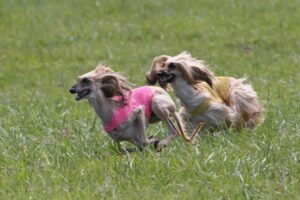
Eddie & Dr. Selma Kominek are the breeders behind Kominek Afghan Hounds. Read about the kennel’s beginnings, lure coursing, photos and more!
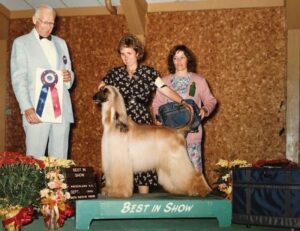
Sandra Frei is the breeder behind Stormhill Afghans. Read about the kennel’s beginnings, dogs, puppies, photos and more!
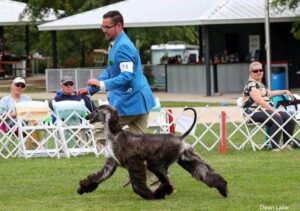
Athletic, aristocratic, and indelibly unique, the proper movement of the Afghan Hound can be one of its most misunderstood characteristics.
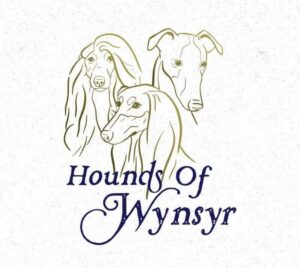
Interview with Hound Group Breeder D. Scott Pfeil – Wynsyr Kennels Where do I live? How many years in dogs? How many years
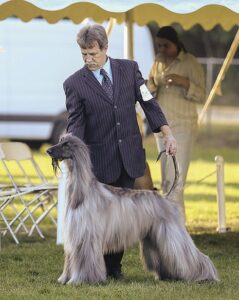
Stephen Williams | Afghan Hounds: I walked in the show ring for the very first time in 2014 at the encouragement of my dog’s breeder.

Dan Sayers is the Editor-in-Chief of SHOWSIGHT digital and print publications. He received a B.S. from Drexel University where he studied interior architectural design. His professional career has allowed him to develop his planning, problem-solving, and project management skills, which were employed in the office, educational, and financial sectors. While working as a project manager, he earned a Graphic Design Certificate from the University of the Arts and began creating ads for many of America’s top-winning show dogs. Through this work, Dan became Editor-in-Chief of the nation’s first online-only dog show publication. His current role expands on this experience and broadly extends to cover the sport of dogs in Companion and Performance events as well as all aspects of Conformation.
Dan is a long-time member of the Irish Water Spaniel Club of America and is the organization’s current AKC Delegate and Archivist/Historian, as well as a club-approved Breed Mentor. From 2000-2010, he was the club’s AKC Gazette Columnist. He breeds Irish Water Spaniels under the Quiet Storm prefix and has judged the IWSCA National Specialty Sweepstakes twice. Dan is a member of the Morris and Essex Kennel Club as well as the Dog Writers Association of America, which recognized his illustrations in the award-winning canine compendium, the Encyclopedia of K-9 Terminology.
The best way to ensure a long and happy relationship with a purebred dog is to purchase one from a responsible breeder. Not sure where to begin?
Contact the National Parent Club’s Breeder Referral Program, which is listed on the AKC Breeder Referral Contacts page.
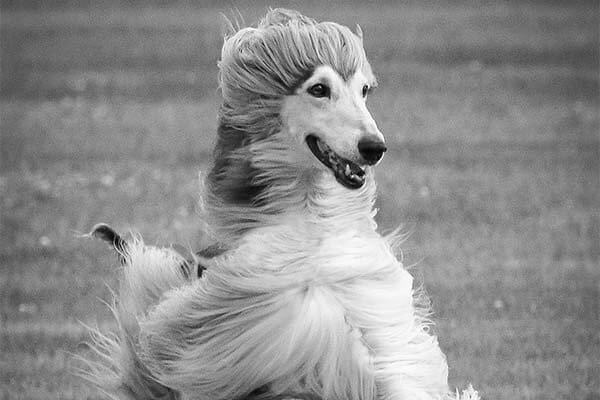
"*" indicates required fields
Showsight Magazine–the world’s most influential purebred dog publication since 1992. Each issue reaches a global audience dedicated to preserving the history and health of purpose bred dogs. Filled with award-winning editorial focused on news and insights from the dog show community, top breeders, handlers, AKC Judges, and more!